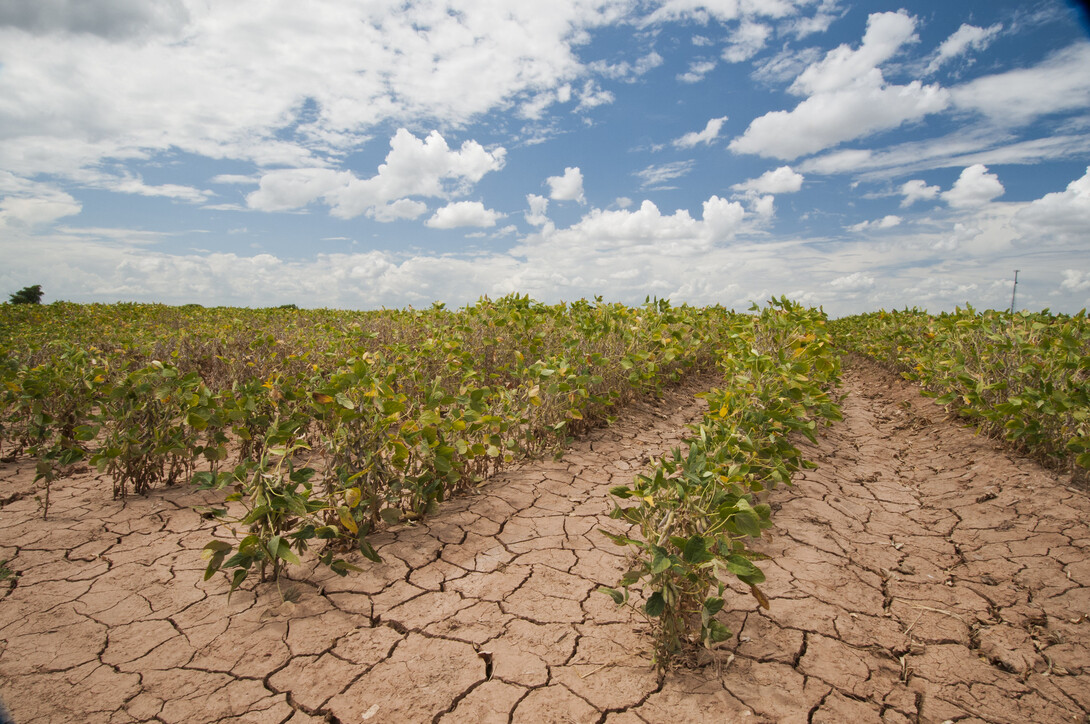
Lincoln, Neb. —No matter where you live, drought is a part of life. Being prepared for drought before the next one develops can help reduce the severity of its damaging effects on everything from agricultural production to urban water supplies to physical and emotional well-being and beyond.
The National Drought Mitigation Center, based at the University of Nebraska-Lincoln School of Natural Resources, along with Nebraska Extension, work with an array of partners to develop resources that can help you be better prepared before and during drought events. The most well-known of those resources is the National Drought Mitigation Center’s U.S. Drought Monitor, which provides a weekly drought outlook across all 50 states and U.S. territories, along with over 20 years of data collected over the monitor’s history.
"The Sept. 1, 2020, U.S. Drought Monitor showed nearly 33.3% of the U.S. and Puerto Rico area in drought, and Nebraska hasn't avoided it," NDMC director Mark Svoboda said. "Nearly 49% of the Cornhusker State is experiencing drought at this time. Since our founding 25 years ago, the National Drought Mitigation Center has been building and sharing resources to help people in times like these -- and to prepare for times like these. We have collaborated with local, state and federal partners to build drought monitoring and resilience tools. We have worked with land managers and U.S. residents across Nebraska (and the country) to learn how droughts affect them, and how they've best weathered them. We want to share what we've developed and learned with you through this collection of resources, and invite you to check out the full scope of our work at drought.unl.edu."
Following are some of the tools that Nebraska Extension and the National Drought Mitigation Center have helped develop that can help Nebraskans in times of drought:
Nebraska Extension’s drought response page offers response for ranchers, farmers and homehowners about how they can mitigate the effects of drought in their fields, pastures and backyards. Visit disaster.unl.edu/drought for more information.
The Vegetation Drought Response Index combines data from satellites with ground-based measurements and other information to detect drought’s effects on vegetation.
The Quick Drought Response Index was developed to complement the Vegetation Drought Response Index, and was designed to detect the effects of drought at time intervals of a month or less.
The NASA GRACE-FO soil moisture tools provide weekly global maps of terrestrial water (surface soil, root zone soil and shallow groundwater) levels around the planet. Monitoring the wetness of the soil is essential for managing agricultural crops and predicting their yields, because soil moisture is the water available to plant roots.
The experimental Grass-Cast forecast uses almost 40 years of historical data on weather and vegetation growth— combined with seasonal precipitation forecasts—to predict if rangelands are likely to produce above-normal, near-normal or below-normal amounts of vegetation.
The Midwest Specialty Crop Decision Calendars provide month-by-month and seasonal advice on how growers manage production of Midwestern apple, grape, cranberry and irrigated potato crops during drought years. Along with the calendars available on the NDMC site, there are also fact sheets that highlight appropriate drought and climate tools for growers to monitor during the growing seasons and beyond.
With every drought, people ask how it compares to previous ones -- the most recent drought, the drought of record for an area or even (often) the Dust Bowl. Until recently, the answers haven’t been readily available for individual stations, and more often than not have only been available for climate divisions. The NDMC Drought Risk Atlas, which recently received a major upgrade, answers all of these questions and provide user-friendly access to the data.
The Nebraska Climate Assessment Response Committee, which includes members from Nebraska Extension and the NDMC, has a set of drought planning and monitoring resources on its website.
The Managing Drought Risk on the Ranch guide was created to help rangeland managers better prepare for and manage drought. The guide includes information gathered from interviews with Great Plains rangeland managers, including three based in Nebraska, who have implemented drought plans on their land.
Nebraskans can also help better inform U.S. Drought Monitor authors and NDMC researchers about what drought looks like (and doesn’t look like) where they live. Sending images to the Visual Drought Atlas allows us to compare landscapes over time, showing what different places across the country look like in dry, wet and normal years. And submitting conditions to our Condition Monitoring Observer Reports (CMOR) network helps us understand how drought is affecting local conditions and map impacts nationwide.
To see a full list of the Drought Center’s resources, research and projects, and to learn more about the NDMC, visit: drought.unl.edu.







